Create Youtube Player in ReactJs — Part 2
by Nabendu Biswas / April 22nd, 2018
#react #beginners #javascript
Series: Youtube-Player-React
Welcome to part 2. Let’s start from where we left, but first add bootstrap to our project so that it looks a bit ok.
Add this in index.html in the head part.
<link rel="stylesheet" href="https://cdn.rawgit.com/twbs/bootstrap/48938155eb24b4ccdde09426066869504c6dab3c/dist/css/bootstrap.min.css">
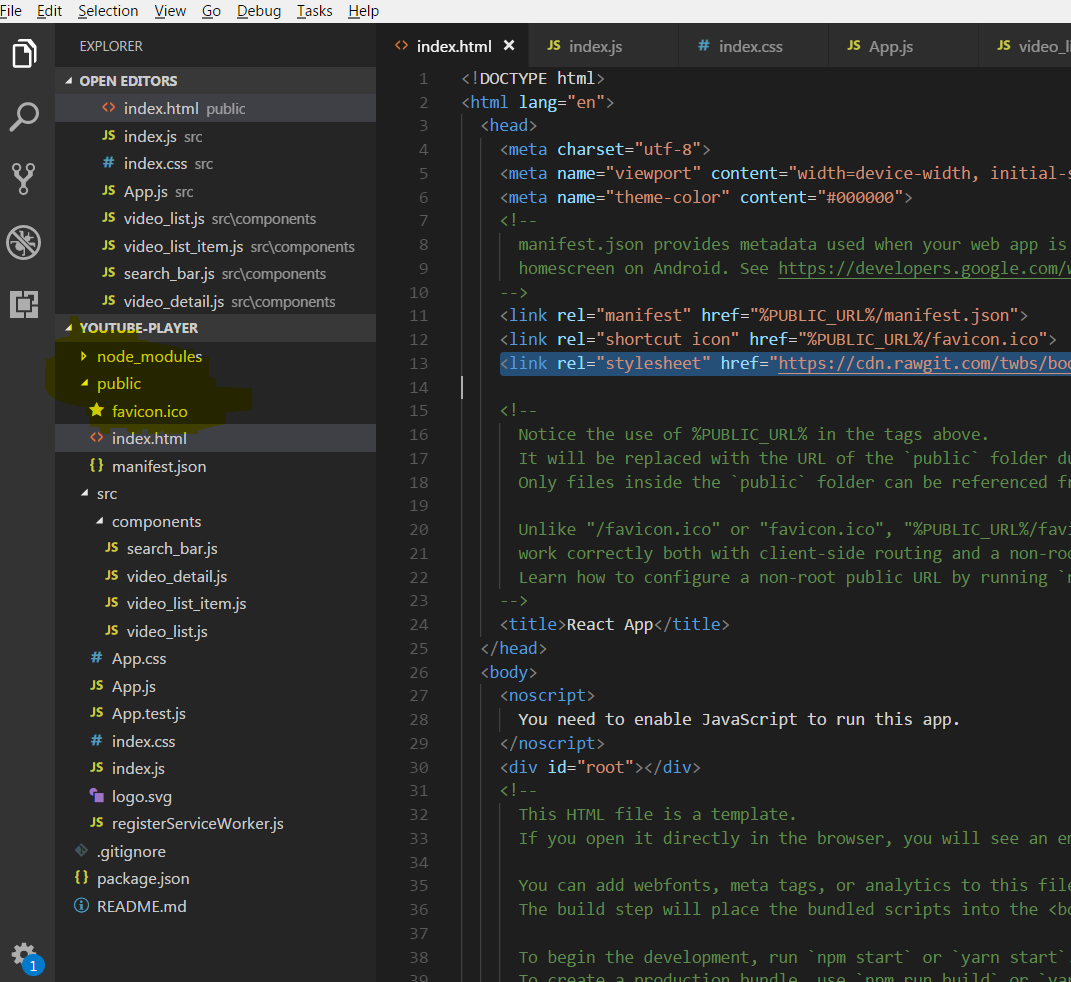 adding bootstrap to index.html
adding bootstrap to index.html
Let’s start by updating App.js
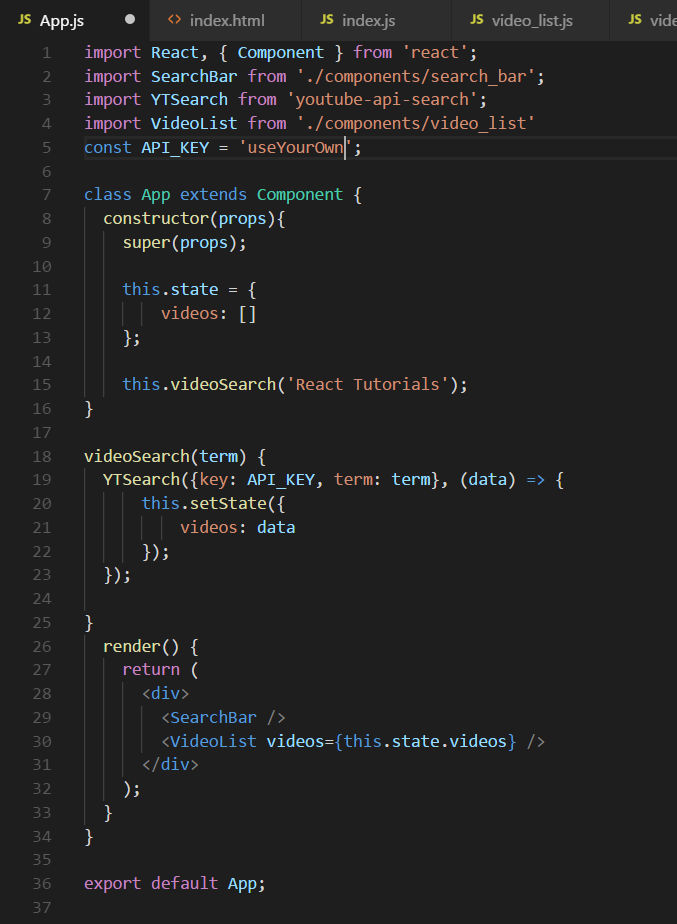 App.js
App.js
Here we are first importing the youtube-search-api, which we install through npm in previous part. Then in the constructor we are creating a state object which contains a key-value pair of videos: []. So, basically an empty array.
In constructor only we are calling a function with parameters ‘React tutorials’ by this.videoSearch(‘React Tutorials’);
Now, in this function we are doing a Youtube search by using the youtube-search-api. We are passing the API_KEY and the term (‘React Tutorials’ here). So, it does a youtube search with the term and returns us the result from youtube in data.It is an array of object as shown below. Do a console.log to find more about it.
 data from youtube search
data from youtube search
Now we are setting this data array videos by this.setState({videos: data})
Now in the render() we are a new line <VideoList videos={this.state.videos} />. Here we have a new component VideoList in which we are passing parameter, like in normal HTML tag. But these parameters have special name and this is called passing props.In react we have a one-directional data flow, and this props were are passing from App(parent) to VideoList(children)
Now lets use this props videos which is a array of object, in the VideoList component. Open the file video_list.js and update the below.
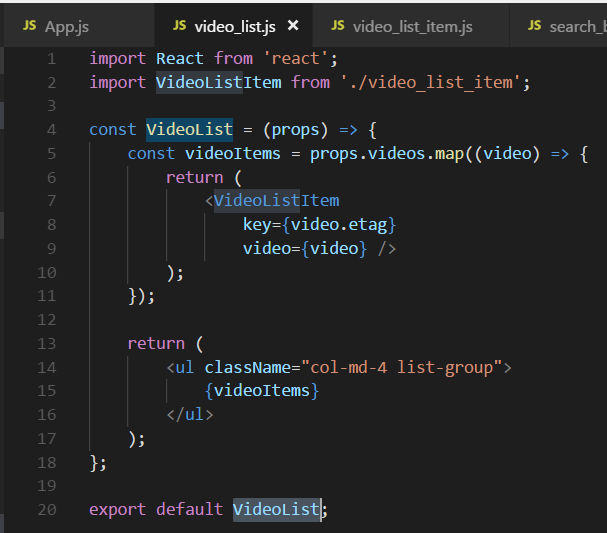 video_list.js
video_list.js
This is a simple functional component, here in (props) we will receive the videos passed by App as props.videos
As it’s an array of object, we iterate through it using map and pass each object to VideoList child component VideoListItem by <VideoListItem key={video.etag} video={video} />
Notice, we need a unique key when dealing with array or React will throws us warning. As our data from youtube returns an unique etag, we are using that.
Whatever we are getting back from VideoListItem, we are storing in a constant videoItems and displaying inside a unordered list.
The unordered list <ul className="col-md-4 list-group"> contains a className, which is same a class in normal HTML tag.But in react we have to use a className. The col-md-4 is a bootstrap thing.
Lets move to VideoListItem now, which is our individual row. We will update the video_list_item.js now as below
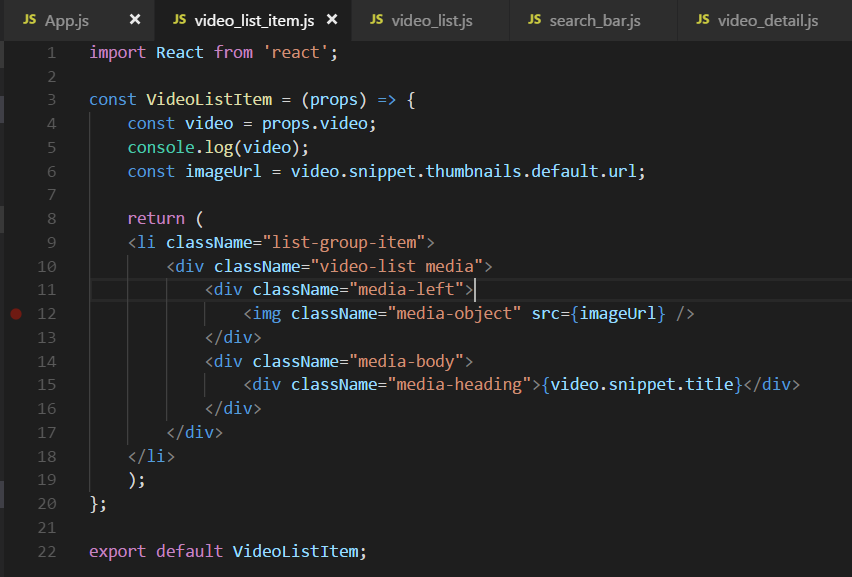 video_list_item.js
video_list_item.js
Here again we are receiving props video and accessing it by props.video. We will take image and title from here. Let’s see what we receive.
 video object
video object
Most of the thing in the code is for styling in bootstrap. But the imageUrl we are getting from the video object by const imageUrl = video.snippet.thumbnails.default.url;
Displaying it in the image by <img className="media-object" src={imageUrl} /> and also the title by <div className="media-heading">{video.snippet.title}</div>
This is what we get from the above updated to our code in App.js, video_list.js and video_list_item.js
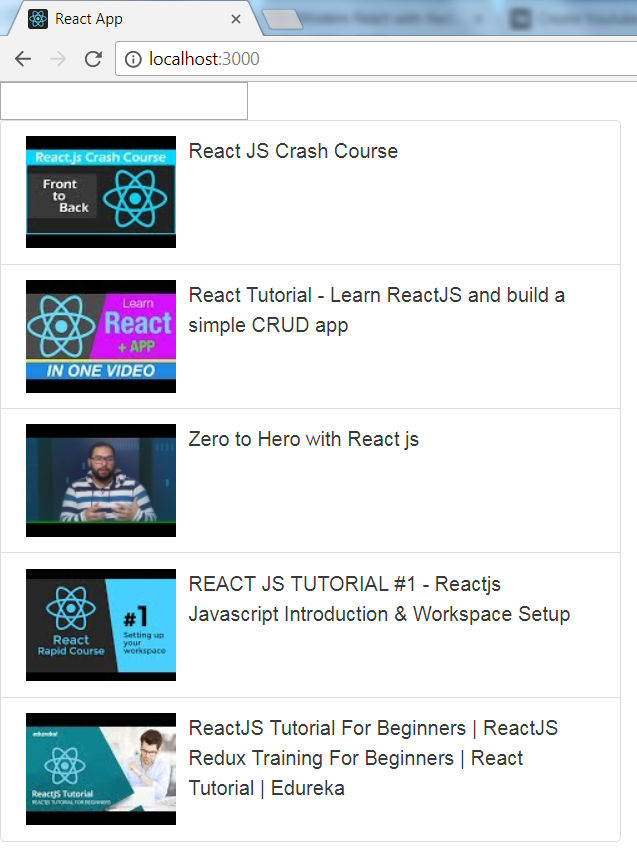 Updated app
Updated app
This concludes part 2.